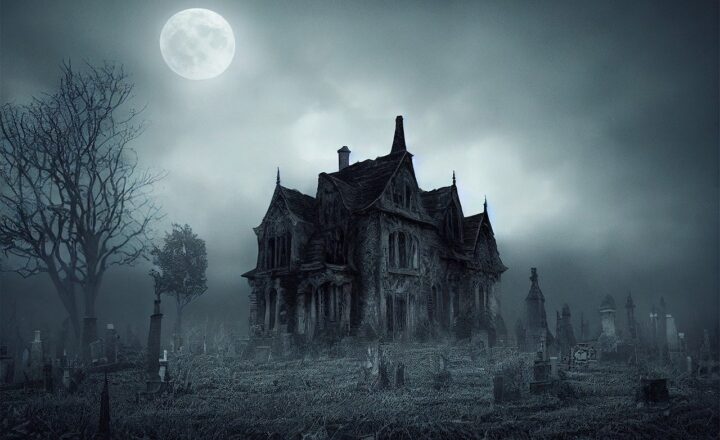The Role of Scary Movies in Exploring Taboo Topics and Hidden Fears
November 17, 2024

Scary movies have long been a staple of popular culture, captivating audiences with their spine-chilling plots and heart-pounding thrills. But beneath this layer of entertainment lies a deeper purpose; horror films serve as a unique lens through which we can explore taboo topics and confront our hidden fears. From phobias and societal issues to existential dilemmas, scary movies provide a platform for viewers to engage with discomforting subjects in a safe environment.
1. The Psychology of Fear
To understand the role of scary movies, it is essential to delve into the psychology of fear. Fear is a survival mechanism that alerts us to danger and prepares our bodies for fight or flight responses. However, fear is not merely a reaction to real-life threats; it can also manifest in responses to unseen forces or abstract concepts.
Horror films strike a chord with audiences by tapping into these primal fears. Whether it’s the fear of the unknown, loss, or even death, these films allow us to confront discomforting thoughts in a controlled manner. This exploration of fear not only provides cathartic experiences but also helps viewers process complex emotions and experiences.
2. Society’s Taboos: A Reflection in Horror
Horror films often serve as mirrors reflecting societal fears and taboos, making them relevant cultural critiques. Each decade’s horror film trends echo pressing societal issues, from gender roles and race relations to mental health and addiction.
For example, the surge of zombie films in the two thousand’s reflects societal anxieties about consumerism and societal collapse. Notable films like “28 Days Later” and “World War Z” portray a world overrun by the undead, enabling viewers to explore themes of survival and the consequences of societal neglect.
Similarly, slasher films, which gained popularity in the 1980s, often contained subtexts about sexuality and violence. Movies like “Halloween” and “A Nightmare on Elm Street” illustrate how characters, especially women, grapple with their identities in a patriarchal society. Thus, horror becomes a medium for dissecting and addressing societal concerns that audiences might otherwise avoid discussing.
3. Subverting Norms Through Horror
Horror films frequently subvert social norms, offering explorations of taboo subjects that might be deemed unacceptable in everyday discourse. By presenting riskier topics such as necrophilia, cannibalism, and sexual assault, horror takes audiences to places they wouldn’t ordinarily go.
Films like “The Silence of the Lambs” and “Hereditary” present complex characters grappling with intense psychological challenges, thereby ensuring that these stories resonate deeply with audiences. The horror genre enables filmmakers to prod uncomfortable subjects, making commentary on societal anxieties and personal fears.
This subversion provides audiences insights into the darker side of human nature and allows for discussions that might be too controversial in mainstream narratives. Horror offers a unique vantage point to explore these nuanced experiences, encouraging conversations around topics like mental illness, trauma, and identity.
4. Catharsis Through Scaring
One of the wonderful aspects of horror films is their potential to provide catharsis. Engaging with frightening narratives can lead to emotional relief as viewers face their fears through the protective lens of fiction. Allowing oneself to be frightened can be therapeutic; it provides a means of confronting one’s anxieties in a controlled environment.
For many, scary movies create a sense of excitement and relief when the credits roll, as they emerge from the experience having navigated through fears and emerged unscathed. This journey can help them cognitively restructure their responses to frightful situations in real life, leading to a newfound resilience when faced with their own dilemmas.
Some psychological studies suggest that this cathartic experience may even provide benefits that extend beyond the screen, including improved coping mechanisms and a better understanding of personal fears.
5. Addressing Personal Fears: The Role of Identification
Identification with characters in horror films plays a crucial role in how audiences process their fears. When viewers see the protagonists confront unspeakable terrors, they may find themselves resonating with the characters’ struggles. This sense of identification can lead to a deeper understanding of one’s anxieties, allowing watchers to confront fears that are personal and often hidden.
For instance, films like “It Follows” present sexual anxieties, while “Get Out” weaves in themes of racial tension. By putting these issues into a horror context, filmmakers provide audiences the opportunity to reflect on their own experiences through metaphor. The process of identification enables viewers to deal with their own suppressed fears and societal tensions indirectly, which often feel safer than addressing them directly.
6. The Community Experience of Fear
Watching scary movies can foster a sense of community among viewers. These films prompt communal reactions—screams, laughter, gasps—that can create a collective experience. The shared engagement with horror narratives enhances connectivity and opens pathways for discussing the underlying themes, including fears that might otherwise remain unspoken.
In theaters, audience members bond over their reactions, creating an atmosphere where confronting fears becomes not just an individual experience, but a shared one. This can illuminate communal anxieties regarding taboo topics and bring to light how collective fears shape societies.
Conclusion: Scary Movies as Mirrors of Society
Ultimately, scary movies act as intricate tapestries woven with the threads of fear, taboo, and exploration. They offer a vital arena for viewing the hidden, discussing societal issues, and confronting existential layers of our psyche. Beyond their entertainment value, horror films provoke thought and discussion, enriching our understanding of culture and humanity.
As we navigate the ‘scaries’ of life, viewers can find solace in the darkness, understanding that confronting fears—whether personal or societal—can lead to growth and resilience. The next time the lights dim and the ominous music begins, remember: these films are far more than frightful tales; they are reflections of our innermost fears and the world we inhabit.
With this understanding, perhaps it’s time to embrace our fear and give into the exhilarating ride that horror films consistently deliver.








